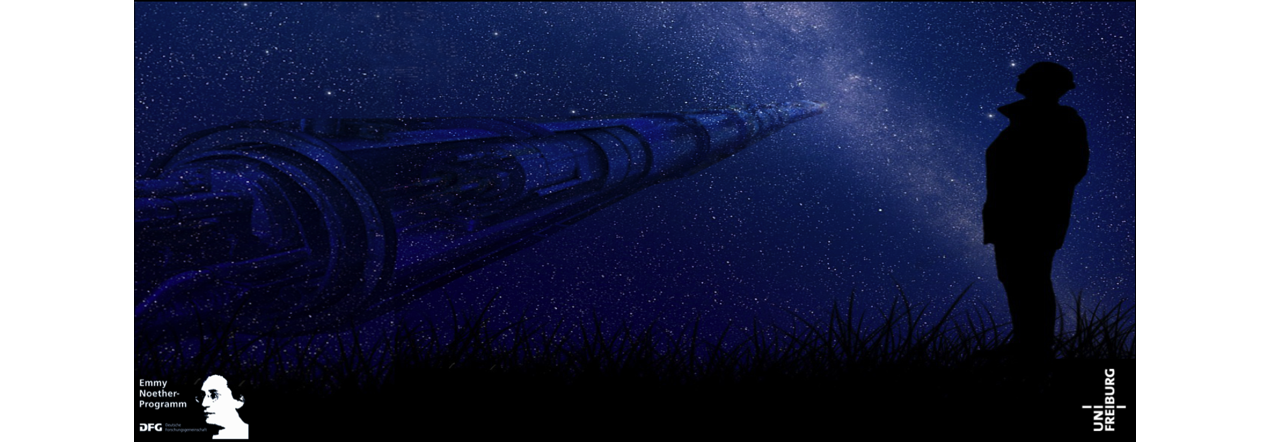HIPARCOS Emmy Noether Independent Junior Research Group
The Higgs boson as a bridge between Particle Physics and Cosmology
Our group focuses on searches for new physics exploiting signatures with Higgs bosons.
In particular we focus on the connection between the Higgs sector (Standard Model or extended) and the big open questions that have arisen from cosmological observations:
- the generation of the matter-antimatter asymmetry
- the nature of dark matter
- the nature of dark energy
These searches build upon the expertise that we have acquired from searches of extended Higgs sectors in H→bb decays.
Electroweak baryogenesis
One of the simplest classes of baryogenesis models predicts that the matter-antimatter asymmetry is generated by the dynamics of the electroweak symmetry breaking mechanism. Since the SM Higgs boson cannot satisfy the conditions for baryogenesis, extensions of the SM Higgs sector have to be considered, with the simplest one being the 2 Higgs doublet models (2HDM).
The smoking gun signature of 2HDM models that satisfy the conditions for baryogenesis is the existence of two heavy scalars with a large mass hierarchy. In this case the decay A→ZH dominates in a large region of parameter space. These searches have recently started being explored in ATLAS [1804.01126, 2011.05639] and CMS [1603.02991, HIG-18-012] with decays of the heavy Higgs to b-quarks or τ leptons.
Our group carried out the first search for cascade decays of heavy Higgs bosons in the Z(ll)H(tt) and Z(vv)H(bb) final states, which significantly extended the previously accessible parameter space [7].
Dark matter in Higgs final states
While there is ample evidence for the existence of dark matter from astronomical observations, its microscopic nature still remains a mystery. An attractive possibility that has recently started being explored is that dark matter might interact with ordinary matter through the exchange of Higgs bosons (usually involving extended Higgs sectors).
We are involved in searches for dark matter in final states with a SM Higgs boson and missing transverse energy (the so-called "mono-Higgs" signature, 1312.2592). We have led the mono-H(bb) search with the complete Run 2 dataset [1] and have also played a pivotal role in the combination of dark matter searches in the context of 2HDM models with an additional pseudoscalar mediator [6]. In this area we are also collaborating with Dr. Ulrich Haisch to further explore the phenomenology of DM models with extended Higgs sectors and uncover new signatures that can be searched for at the LHC [3,4].
Dark energy
The discovery of the apparent accelerated expansion of the observable universe has been one of the most unexpected findings in cosmology. A plethora of models have been suggested to explain DE, ranging from new fundamental fields to modifications of General Relativity. The elucidation of the nature of DE is a very active field of research in cosmology and particle physics with many experiments ongoing or under construction (see 1201.2434 and 1309.5380 for a review).
It has been suggested (astro-ph/0612452, astro-ph/0702615) that cosmological observations cannot distinguish between theories with new fundamental fields and modified gravity. Input from particle physics experiments is therefore necessary in order to understand the microscopic nature of DE.
Our group has pioneered the first search for dark energy in ATLAS, based on the model proposed in
1604.04299; the results were presented in ATL-PHYS-PUB-2018-008 and [P1]. We are also collaborating with Prof. Clare Burrage and Prof. Christoph Englert on the study of dark energy models through the Higgs sector [5].
Monte-Carlo event generators
Our group has played a key role in the improvement of Monte-Carlo event generators used for the modeling of LHC physics, specifically on the improvement of the modeling of final states with top quarks, where we have collaborated in the past with Prof. Torbjörn Sjöstrand (the lead developer of the Pythia generator) [P6] and we continue collaborating with Dr. Rikkert Frederix (one of the lead developers of the MadGraph5_aMC@NLO generator).
We have also held key roles in the ATLAS Monte-Carlo group.
Identification of heavy-flavour jets
Some of the final states arising from heavy Higgs decays contain highly energetic heavy flavour jets. The B hadrons in these jets might decay after the first tracker layers, which makes the identifcation of these jets more difficult. We are investigating ways to improve the identification efficiency for such high-momentum heavy flavour jets, exploiting information from the inner tracker hits, by combining the ideas proposed in 1604.05036 with state-of-the-art machine learning techniques.
